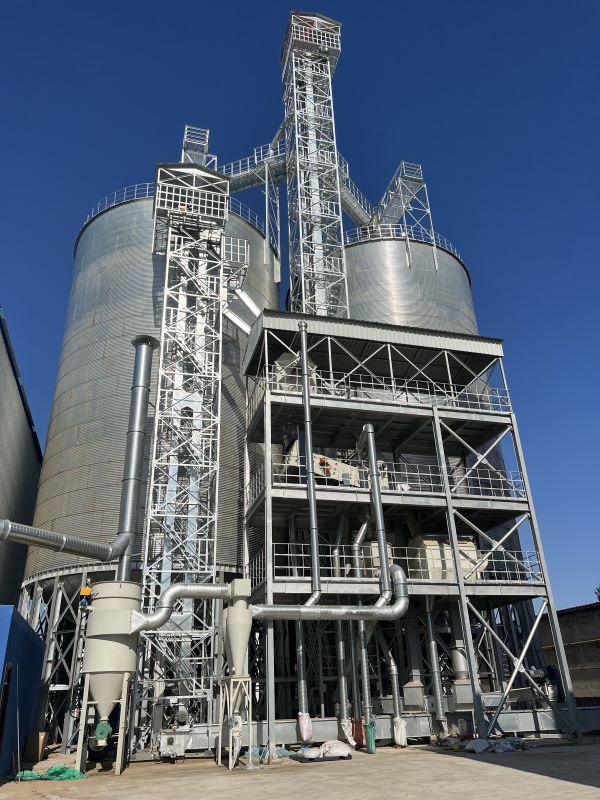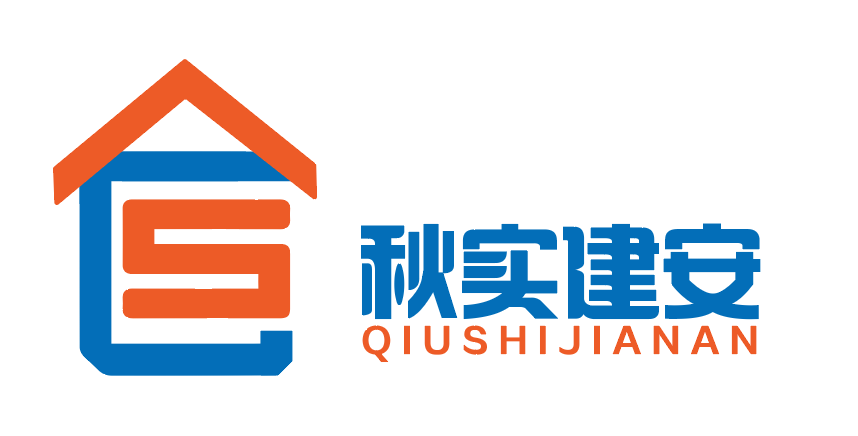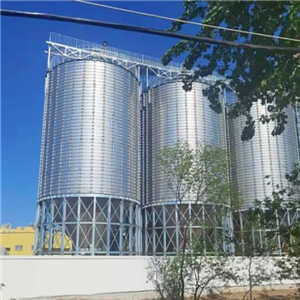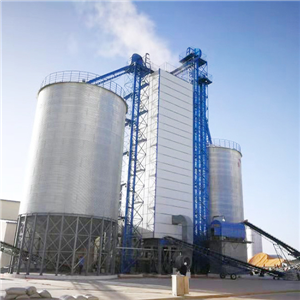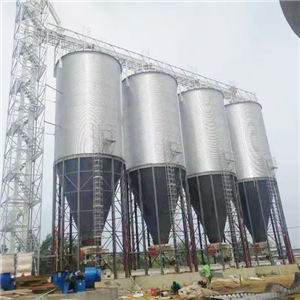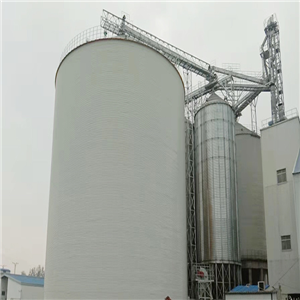Storage Project in Helan County Boosts Loss Reduction and Efficiency
High-moisture grain handling pressure: Consecutive rainy weather during harvest often pushes rice moisture content above 22%. Traditional storage facilities lack rapid dehumidification capabilities, leading to mold growth within 7 days of storage.
Inefficient space use: Old brick-and-concrete silos had limited capacity and a scattered layout. Storing 1,600 tons of rice required 800 square meters, and uneven ventilation caused localized heat buildup and mold.
Demand for green storage: The enterprise previously relied on chemical pesticides for pest control – a practice that harmed grain quality and failed to meet the green development standards of Ningxia’s "High-Quality Grain Project".
Material & durability: Silos were built with high-strength galvanized coil plates using a spiral lock-seam process, creating 35mm-wide external spiral ridges. This design boosts compressive strength by 40% vs. traditional silos, enabling resistance to spring sandstorms in the Helan Mountain area.
Temperature control: A double-layer insulation system (with polyurethane inner layer) keeps internal temperatures below 25°C in summer (blocking external 40°C heat) and prevents winter condensation by reducing heat loss.
Space efficiency: Vertical compact design cuts storage space for 1,600 tons of rice from 800㎡ to 200㎡ – a 4x improvement in space utilization.
8 variable-frequency fans at the silo base, paired with real-time moisture sensors, automatically activate when rice moisture exceeds 15%.
A top-mounted ozone generator reduces high-moisture rice to safe levels in 7–10 days while inhibiting mold.
Integration with the enterprise’s existing 500-ton grain dryer creates a "drying – dehumidification – storage" closed loop, tripling processing efficiency vs. traditional methods.
Chemical-free pest management: Food-grade inert powder replaces fumigation. When pests are detected, the system sprays powder evenly via silo wall pipelines – pests die from dehydration, with zero chemical residues.
Smart oversight: Liaoning Qiushi’s proprietary "Intelligent Grain Condition Management System" enables real-time tracking of temperature, humidity, and pest activity. Managers access data via mobile devices, with automatic alerts for abnormal conditions.
1,800 tons of high-moisture rice processed in the first season.
Storage loss dropped to 15 tons (0.8% loss rate) – a reduction of 144 tons vs. pre-project levels.
Direct economic recovery: 432,000 yuan (based on annual rice purchase prices) – equivalent to adding 432 mu (≈28.8 hectares) of fertile farmland yield.
60% electricity savings: Intelligent auto-control of ventilation/dehumidification equipment replaces manual operation.
28,000 yuan annual savings on chemical pesticides.
Higher grain quality: Qualification rate rose from 85% to 99%, with a 0.2 yuan/kg premium for high-quality rice – adding over 500,000 yuan in annual income.
Expanded high-quality rice procurement: The enterprise now offers "dry/wet grain acceptance" to local farmers.
30% lower processing costs: 50 yuan/ton for drying/cleaning (vs. market average).
Over 100 yuan/ton income increase for 2,000+ farming households – achieving a "win-win" for enterprise efficiency and farmer livelihoods.
A representative from the Ningxia Grain and Material Reserve Bureau noted: "This project sets a replicable ‘technology + service’ model for post-harvest grain systems in Ningxia’s irrigation areas."
